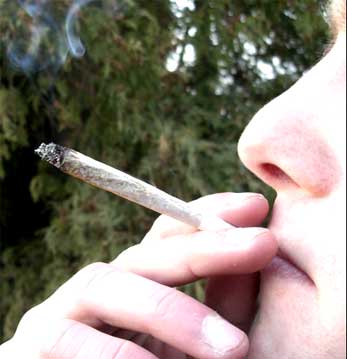One of the issues that people are beginning to become weary of across the United States is addiction to painkillers. Whether you were in a car accident, are a veteran, or just simply have a rather grave injury, you may have already been in contact with them.
 And yes, who can hate something that actually relieves pain for so many people? Don't people deserve to not be in pain in the richest country in the world? Frankly, no one deserves to be in pain. But the real issue right now in America is that not only are opioids being prescribed in number, they are also being abused.
And yes, who can hate something that actually relieves pain for so many people? Don't people deserve to not be in pain in the richest country in the world? Frankly, no one deserves to be in pain. But the real issue right now in America is that not only are opioids being prescribed in number, they are also being abused.
And what's quite strange about this abuse is that it is rampant, and it's affecting people who haven't necessarily encountered these problems before - poor, white southerners, often farmers - something noted in this story from PortCityDaily.com:
Between 1999 and 2014, opioid fatalities in New Hanover County grew from one to 24. Then, in only a year, the rate ballooned, nearly doubling to 45. These overdoses did not result only heroin, they came increasingly from prescription opiates and synthetic painkillers. In fact, prescription medication killed more than twice as many people as heroin in 2015. In North Carolina, 738 were killed by prescription medication, some of it stolen.
Those are huge numbers and are beginning to serve as a shock to many. What's more, it's affecting the crime rates as well:
Statewide, the North Carolina Department of Justice notes that cocaine arrests are down and marijuana arrests have remained stable. Meanwhile, according to the DOJ’s State Bureau of Investigation, arrests for possession of synthetic opiates – one of the leading factors in spiking overdose rates – have risen 132 percent (more than doubled) between 2000 and 2011. Sale and manufacturing arrests have risen 251 percent (more than tripled).
Wilmington, NC is far from alone in terms of addictions, but it is emblematic of a problem that is spiraling out of control. The high cost of these Opioid medications mean that once you become addicted, you may find yourself broke as well. It's a double edged sword that has brought crime, poverty and, yes, heroin (which is sometimes actually cheaper than the prescriptions) to many areas that simply never had those issues before.
Pain Relief Without Addiction?
Deep in the morass of the marijuana debate, there is hope. The fact that medical marijuana does indeed relieve pain in many Americans without any addiction at all is now become well known. What's more, the use of medical marijuana to relieve pain has actually begun to save people's lives:
A 2016 study by researchers at Johns Hopkins Bloomberg School of Public Health found that states with medical marijuana laws had 25 percent fewer opioid overdose deaths than states that do not have medical marijuana laws. And another study published in Health Affairs last year found that prescriptions for opioid painkillers such as OxyContin, Vicodin and Percocet paid for by Medicare dropped substantially in states that adopted medical marijuana laws.
(Via: https://www.420magazine.com/2017/02/can-marijuana-ease-opioid-epidemic/)
No Study, No Fact?
A major and quite brutal issue in the medical marijuana debate is simply that because of its Federal classification of marijuana as a Schedule 1, it is nearly impossible to study it. A recent study has brought some interesting ideas, though:
In January, the National Academies of Sciences, Engineering, and Medicine released a review of 10,000 medical marijuana studies published since 1999, showing that substantial evidence supports the use of marijuana or its extracts for the treatment of chronic pain. Existing research also supports its effectiveness in treating multiple-sclerosis-related muscle spasms and chemotherapy-induced nausea and vomiting, according to the literature review. But the study cautioned that both the positive and negative health effects of marijuana need to be studied further.
As a result of this study, doctors, like New York's Dr. Howard Shapiro, are starting to scale through the regulations and actually prescribe marijuana to patients in chronic pain. While smoking is often not recommended, some devices do smooth out the smoke. He's enthusiastic of the anecdotal results thus far:
“I really think medical marijuana is the drug of the future,” Shapiro said. “We’re going to find out that it does a lot of things we already think it can do, but don’t have scientific studies to prove it.”
“I urge my patients to purchase only a two-week supply at first, so they don’t waste money on a dose that may not be effective,” Shapiro said. Most patients start out with a 1-to-1 ratio of THC, the intoxicating component of marijuana, to CBD, the second major component, which has proven to be medically effective for a range of conditions."
And while Shapiro's bravery (New York is not a fully legal Marijuana-state), other doctors are starting to sign up and consider providing patients with the proper prescriptions.
The debate will continue, of course, but one of the unfortunate facts right now is that, as the study above notes, many of the states with the heaviest addiction problems are also the states least likely to legalize, either recreationally or for medical use.
But, as states continue to legalize fully, a group that at this point includes Oregon, Colorado, Washington, Nevada, Maine, Massachussetts and California, it will be harder and harder for the Federal Government to ignore patients.
Can Pot Stop The American Opioid Addiction? Find more on: Keating Economics Blog
source https://www.keatingeconomics.com/can-pot-stop-the-american-opioid-addiction/
